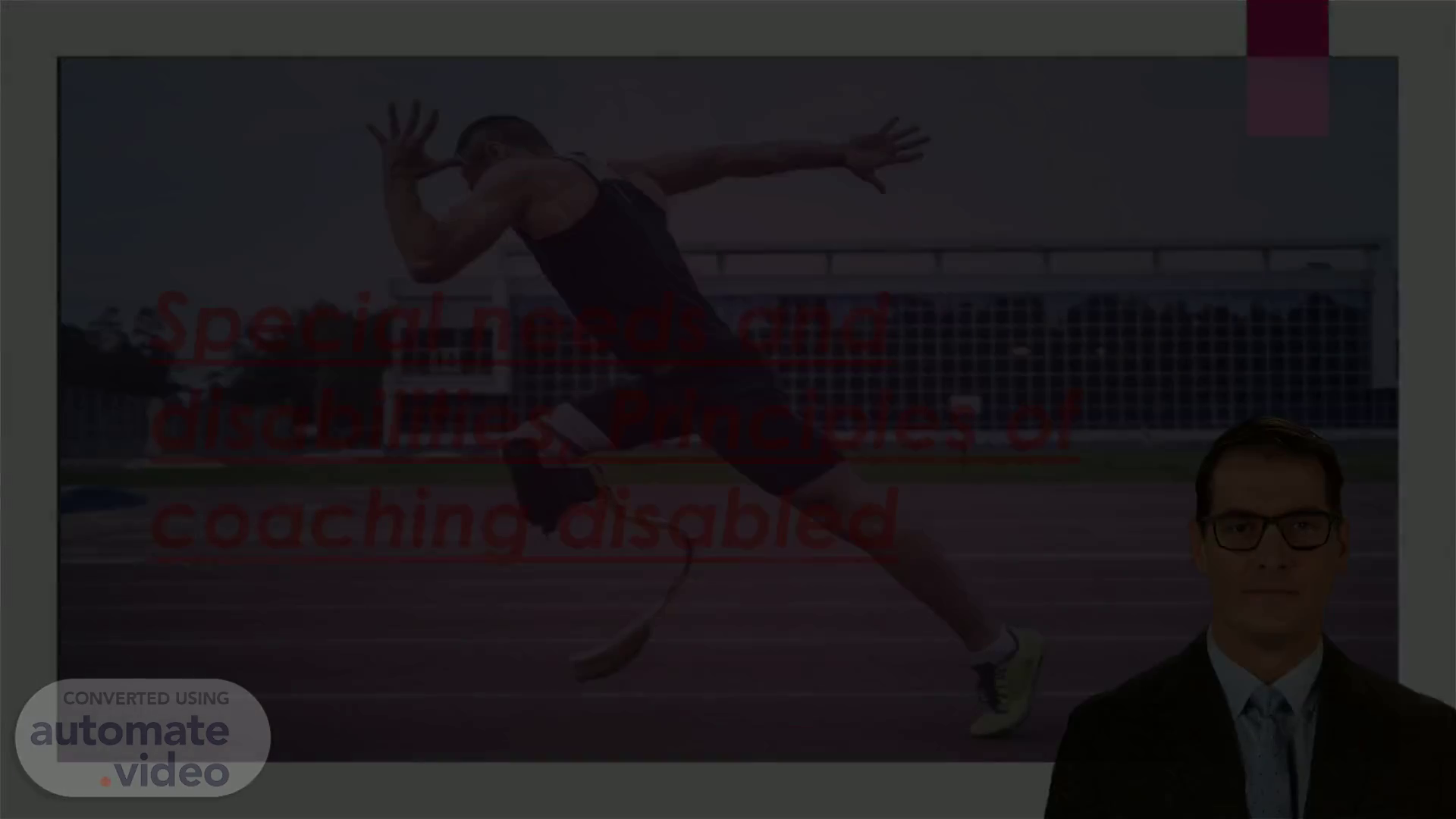
Special needs and disabilities, Principles of coaching disabled
Scene 1 (0s)
[Virtual Presenter] Good morning everyone. I'm here to discuss the principles of coaching disabled athletes with amputation above the knee of one leg. We will be examining the causes of this amputation, the considerations to be taken when training the amputee person, and the cardiovascular improvements that they can achieve by exercising on an arm-leg ergometer. Let's start..
Scene 2 (24s)
[Audio] Amputation above the knee is a significant operation with global consequences. Transfemoral amputation, or above-knee amputation, is done when the lower limb is damaged so severely or has a disease that the blood flow to the lower leg is insufficient, or when the infection is so bad that lower-level surgery is not possible. It can be tough for those who experience this procedure to adapt, and grasping the fundamentals of training persons with transfemoral amputation is an integral component of recovery. A group of medical practitioners are needed to help those who have undergone this procedure adjust to their new way of life, and being knowledgeable of how to guide them is critical..
Scene 3 (1m 4s)
[Audio] Those suffering from an amputation above the knee of one leg may have to face a range of challenges. Generally, such an amputation is caused by diabetes mellitus, peripheral vascular disease, neuropathy or trauma, and the exact level of amputation is determined based on the availability of soft tissues. It is important for anyone coaching someone with this disability to have an understanding and compassionate attitude in order to effectively accommodate for the potential difficulties they may have..
Scene 4 (1m 34s)
[Audio] When it comes to training an amputation above the knee of one leg, several considerations must be taken into account. Classifying the amputation is essential, as is correctly prescribing exercises. Vascular amputees should exercise to relieve the effects of their vascular disease, whereas non-vascular amputees must exercise primarily to reduce the chance of developing secondary disabilities. Lower-extremity amputees may have higher energy expenditure, so exercises must be tailored to the individual. Prosthetic fit should be monitored to avoid skin breakdowns and infections. Additionally, overuse injuries must be prevented to prevent the amputee from experiencing further discomfort with their exercises..
Scene 5 (2m 22s)
[Audio] When training someone with limb loss, particularly an above knee amputation of one leg, there are diverse challenges that must be confronted. These consist of physical restrictions, prosthetic alterations, and pain control, among others. Crafting a multidisciplinary team of healthcare personnel, including physical therapists, occupational therapists, prosthetists, psychologists, and social workers, is critical to offer assistance and aid needed to overcome these difficulties and support in rehabilitation and training..
Scene 6 (2m 55s)
[Audio] Continuing with the training of amputees, it is necessary to continuously adjust and modify the exercises depending on the individual's capabilities and requirement. To achieve a successful result, balance and stability exercises, strengthening exercises, cardiovascular exercises as well as gait and mobility training must be adapted. As an example, the National Center on Health, Physical Activity and Disability has provided a video demonstrating how exercise can be adapted and modified according to the needs and abilities of a person with an amputation..
Scene 7 (3m 30s)
[Audio] Communication is essential when coaching people with disabilities. To ensure instructions are understood, break complex movements into smaller steps with actionable cues and use visual demonstrations. Active listening and patience are necessary to understand their unique challenges, preferences, and goals. If appropriate, tactile and hands-on guidance can be beneficial, but always obtain consent and respect personal boundaries..
Scene 8 (3m 59s)
[Audio] Concluding, personal trainers have the capabilities and understanding to support those who have limb loss and amputations. Thoughtful consideration and modifications can create a safe and inclusive environment for these individuals. As personal trainers, it is our job to make sure that everyone has the opportunity to take part in physical activity, which is accomplished by tailoring our methods to those who have disabilities and special needs. To all personal trainers, thank you for being a champion for each individual and for fostering an inclusive atmosphere..